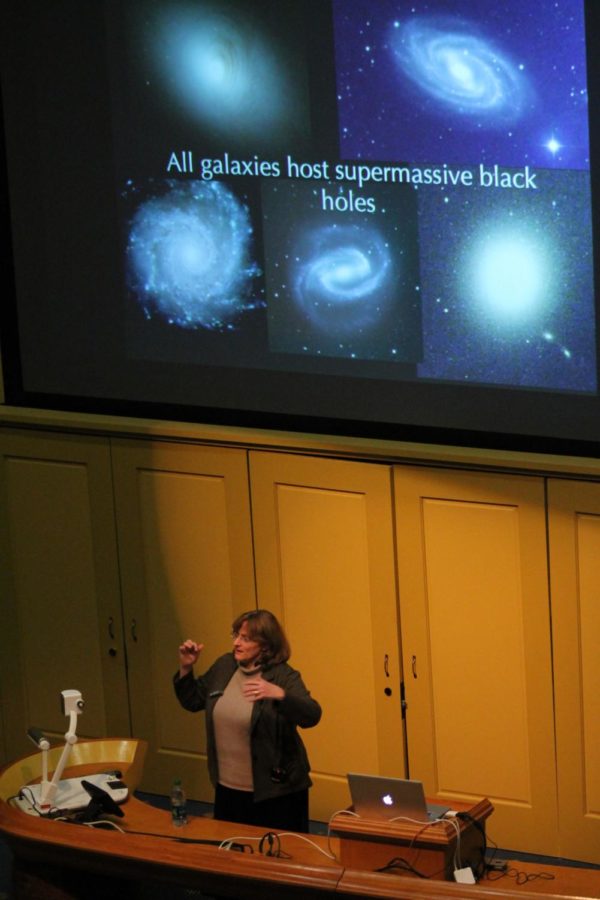Meg Urry takes ISU students through space during lecture series
Richard Martinez / Iowa State Daily
Meg Urry, chair of the Physics Department and director of the Center of Astronomy and Astrophysics at Yale University, visited Iowa State to lecture on her team’s findings on black holes. Urry is a former senior scientist at the Space Telescope Science Institute, which runs the Hubble Space Telescope for N.A.S.A.
February 11, 2014
The lecture hall is pitch black as the audience moves through space, passing by more than 100,000 galaxies.
The image on the screen is the result of research conducted by Meg Urry, the director of yale center for astronomy and astrophysics.
Urry spoke on Black Holes and the evolution of active galaxies Monday in Curtiss Hall as a part of the Women in STEM series. She began the lecture by asking how many audience members were physics students. Several students raised their hands and she said with a laugh, “Excellent, that’s more than my usual audience.”
Urry began the Black Hole lecture with a hint of humor, and said that it was a “small subject for a short talk.” She went on to give three different definitions of Black Holes for the audience of students and community members.
Urry explained that scientists have been thinking about Black Holes before they were even able to prove their existence. The thinking behind Black Holes had its origins in Sir Isaac Newton’s Theory of Gravity, and was expanded upon by scientists such as John Michell and Pierre Laplace, who referred to them as “dark stars”.
She expounded on Einstein’s General Theory of Relativity, and even used a clip from “The Wizard of Oz” to illustrate a point on the Pythagorean Theorem.
Urry also showed simulations of evolving galaxies, and relieved the heavy material of her presentation by ending with a slide that said, “Black Holes and Galaxies live happily together forever after.”
Rachel Wolf, a student who attended the event, said she came because of her long time interest in Black Holes. Wolf was one of many female attendees at the event, which was part of a lecture series that aims to highlight influential women in the physical sciences.
The lecture was organized by Lee Anne Willson, a professor of astronomy at Iowa State, who is an excellent example of the influence women can have in the field. Urry cited Willson as a role model for herself.
“There’s no reason why men can contribute in physical sciences better than women can.” Wolf said.
Urry, who has been researching Black Holes since 1980, has also worked to increase the influence of women within the physical sciences field. She received the Women in Space Science Award in 2010, and said that women, such as Wilson, are encouraging role models to other aspiring female scientists.
“I’ve met these great young women in the department today, and you know, maybe 20 years from now they’ll tell you it helped to see somebody who did stuff they’re interested in and clearly succeeded in the field.” Urry said.

















